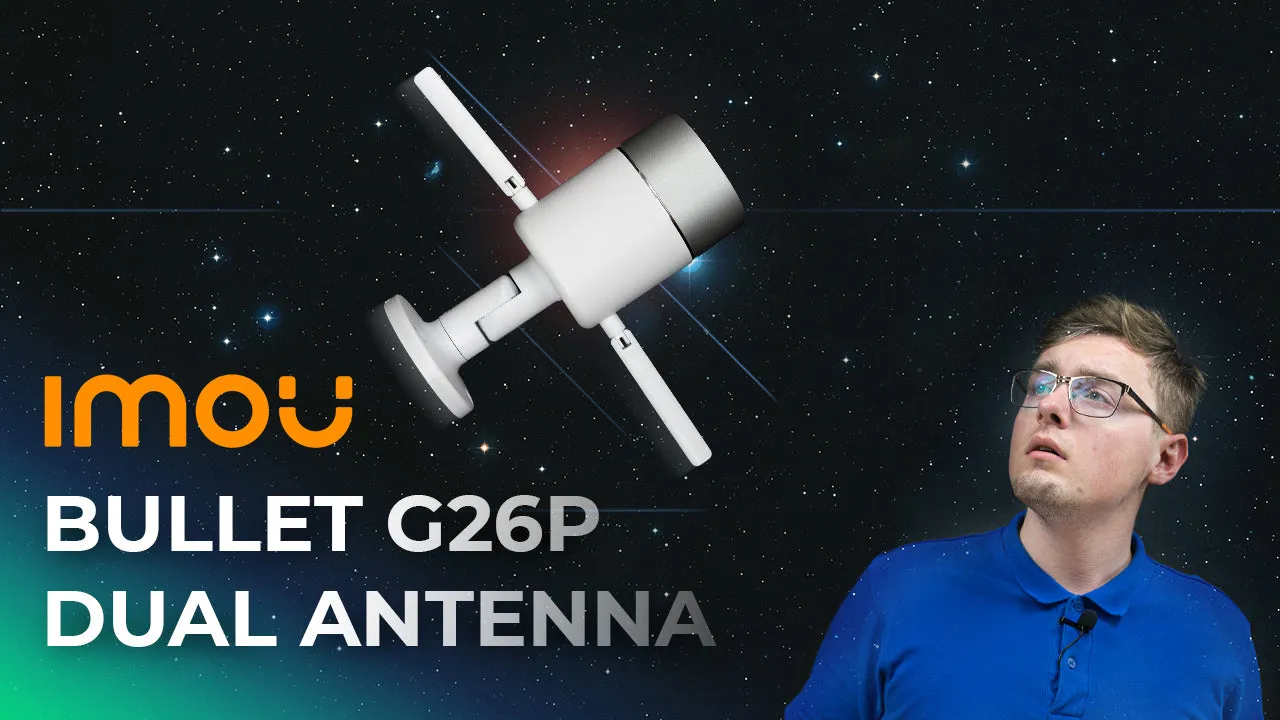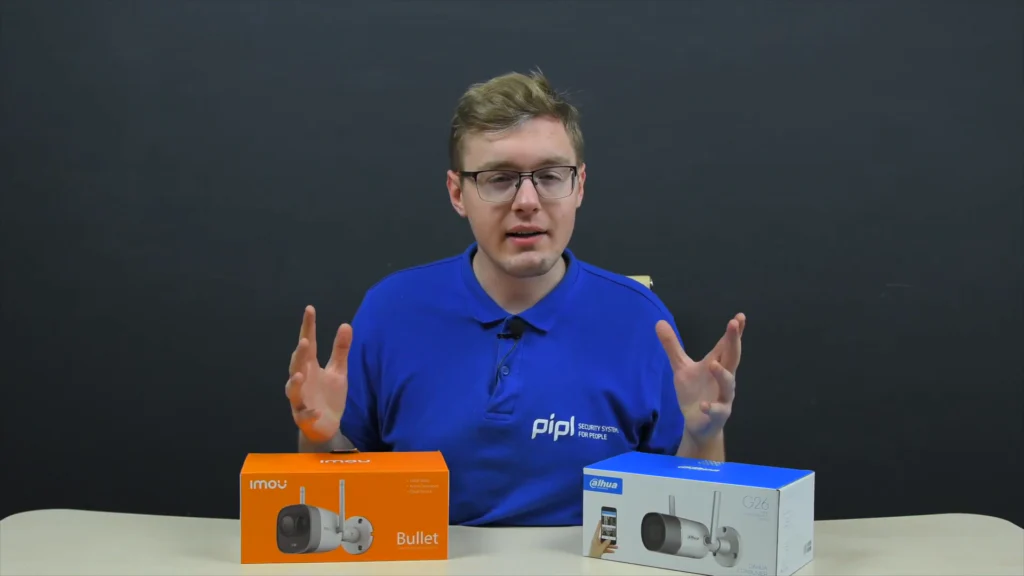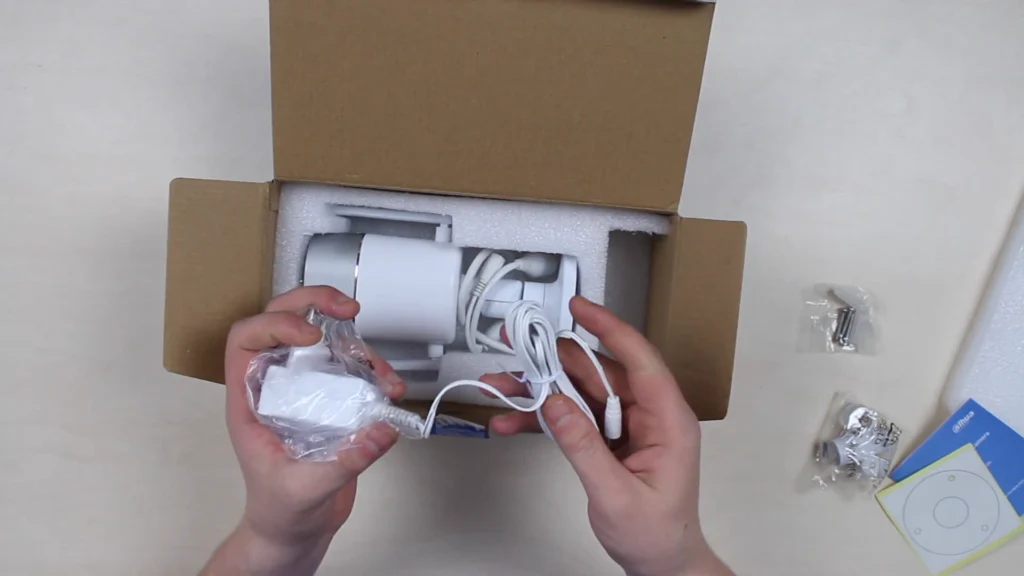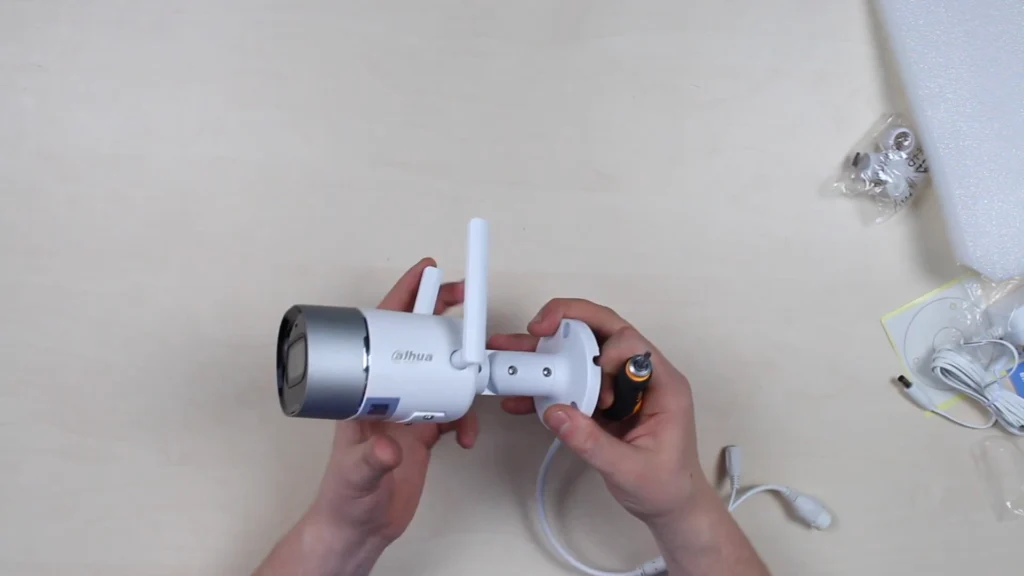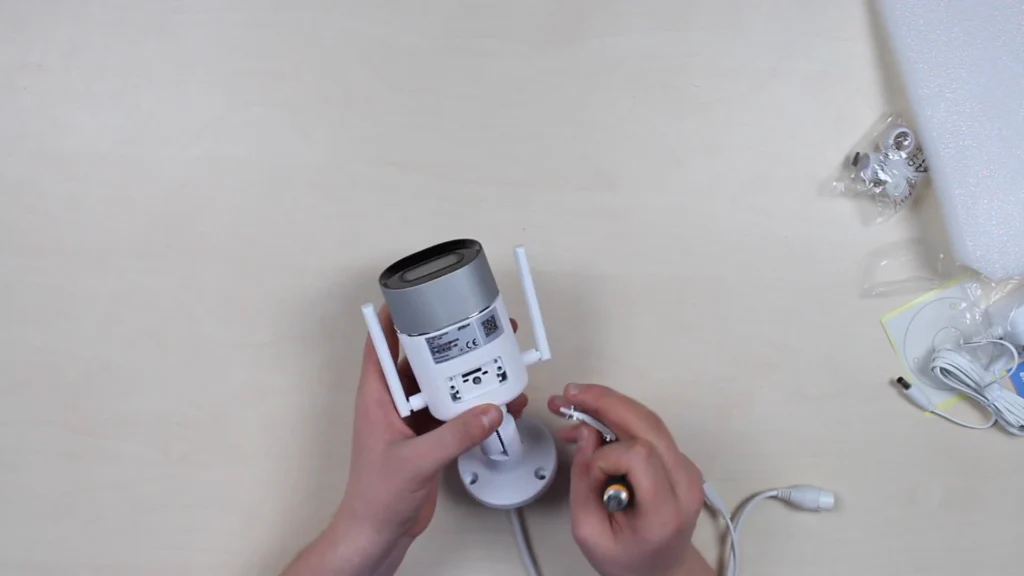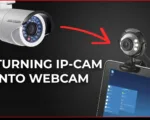This is expected to be an Orange-color box with the IMOU inscriptions all over it instead of Dahua Technology and Dahua Consumer. So that’s kind of weird, isn’t it? Today, we’ve got for review a Bullet-type Wifi Outdoor Camera, produced under 2 different brands simultaneously. What a tangle! To clarify, Dahua Consumer Brand is a predecessor of the IMOU Brand. And what’s strange – at a time they were produced simultaneously in parallel. Identical cameras under different brands. And I think that was a kind of test, where Dahua was launching 2 different consumer-focused brands and estimating which one gets more customer attention, so they could kill the number 2 and focus only on a single brand.
So far, I know that Dahua Consumer Website redirects me to the IMOU website, and it looks like we have a winner. Anyways, IMOU Bullet / Dahua Consumer IPC-G26P is what we are reviewing today, and we’ve also got here its direct competitor – Ezviz C3WN for a comparison, because these are very similar cams in regard to their features. We’ll unbox it, see what specifications it offers. We’re gonna extract a video from both of them, compare their quality and level of details, and also reason a user experience and impressions so you can select a better one.
The Box Contents / The Looks
– 1x Camera;
– 1x Power Adapter;
– 1x Quick Start Guide;
– 1x Screw Package;
– 1x Waterproof Connector;
– 1x Installation Position Map;
We’ve seen plenty of these boxes, and they are pretty much the same all the time. A plastic foam layer on top to secure contents during transportation, as well as the box’s internal sides and bottom, is made out of the foam, too. Next, we see a mounting plate sticker to plan out the install location and a quick start guide. On the left we have a camera, and on a right side we got a pack of screws and anchors, a waterproof connectors to secure cables’ joints, and a 12V power adapter. Now let’s review the camera. The 1st thing that catches attention is the classic tail with a power supply and RJ-45 inputs. The 2nd thing is plastic dual antennas that are here to implement a MIMO technology, used to make our wireless connection more stable. This is a classic and pretty good-looking bullet-form camera with a mounting bracket as a rear part, and we can loose a screw on it to be able to adjust camera’s incline angle in regard to a bracket.
The main camera body part is visually divided into 2 parts, and is probably made from aluminium-silicon alloy, known as silumin, which is yet cheaper, but stronger than pure aluminum, so that’s good. As the camera is IP67 rated, it is water-tight, the inputs located on body are secured under a cover, holding on two screws, that we can loose too to uncover an input for microSD cards up to 128 gigs capacity, and the reset button.
On the backside of that cap, you can notice a tiny white rubber used to fill the space and add extra protection, similar to what you may have seen in a modern smartphone, where you have such in a SIM card slot. Main camera module is 2 megapixel 1080p, below you can see a video shot on this IMOU Bullet G26P during daytime with no any adjustments applied to it, and because Ezviz is its direct competitor regarding a class and and specifications, next to you’ll see a video from Ezviz C3WN, shot during daytime with no any image adjustments.
Even though cameras display colors and their depth differently, this is what we can change in an extra settings menu. What we cannot change is the viewing angle. A wider 132° for IMOU and a 110° for Ezviz, also I think IMOU recording looks more natural due to a higher framerate per second, but this time Ezviz has 30 fps recording support, so that can be adjusted too. Above the camera module, we have a mic hole and a device status LED indicator. Plus, somewhere on the front there are infrared lights, but we’ll be able to see them only after we power on the camera.
Functions / Features
IMOU Bullet / Dahua G26P |
|
| Video | FullHD 1080p / 30 FPS. |
| View Angle | 132° (2.8mm) / 104° (3.6mm) |
| Compression Rate | H.265 |
| MicroSD Capacity | up to 128GB |
| Night View | 30m (98ft) Distance |
| Motion Detection | Yes, software-level |
| Network | Wired & Wireless Wi-fi |
| Protection Rate | IP67 |
| Extras | 2x Wi-fi Antennas / MIMO Technology |
| Microphone | Yes |
| Speaker | No |
| IR LED | Yes |
It is quite a good cam for its class and its money. 2 megapixel 1080P quality is a standard among consumer cams manufacturers, but this is what changes now rapidly, giving way to 3 and 4 megapixel cams, 4K resolution, and et on. So that’s a bit outdated, but not bad at all. The body was built to match an IP67 protection rate and is dust and water-resistant, even against powerful jets. We can feel it is made pretty solid. Now my favorite about IMOU – H.265 high efficiency compression support that delivers a better image, wherein saving up to 50% bandwidth and taking less storage space. Speaking of Ezviz, those guys implemented the latest compression technology only in a few newest models, and C3WN is not one of them.
Unfortunately, motion detection is limited to only a software level, which captures image change only, so there’s no passive infrared and no true human detection. The supported microSD capacity is up to 128 gigabytes for G26, which is two times less than Ezviz has with its 256 GB. But Ezviz doesn’t have H.265 compression rate support. Yet the most outstanding feature that you can find here is a 30 meters or 98.5 feet night view distance, and this parameter is identical for IMOU Bullet and Ezviz C3WN, but let’s put it to practice. Now you see footage taken on IMOU Bullet G26P during night mode, next to it you see Ezviz C3WN video – no comments from us, which version do you like more and why?
To finish it up, we have here a MIMO technology implemented, which is an abbreviation standing for Multiple Input, Multiple Output, and is an antenna technology for wireless communications in which multiple antennas are used at both ends. The antennas at each end are combined to minimize errors and optimize data speed, and MIMO is one of few forms of smart antenna technology, while others use such as MISO and SIMO, where one of the inputs or outputs uses a single antenna.
Activation / Connection
Whatever the camera you are holding in your hands, whether it’s a Dahua Consumer or an IMOU, their activation and control happen via the IMOU app, available for free in the App Store and Google Play. And the exact process is no different and is made very convenient:
– Install IMOU App
– Power up the camera / 12V Power Adapter
– Wait till the LED flashes blue
– Scan QR code / Add camera
– App Menu / Two-way Audio / Snapshot / Recording / Video History / Settings
Watch Full Video Review With Demonstration on YouTube!
Conclusion
To end up and conclude, this IMOU / Dahua Consumer G26P is missing a true passive infrared sensor for a true human detection in order to be perfect in its class for its money. Everything else is fantastic. Solid-made body, IP67 protection rate, MIMO technology used to make the connection more stable, a great night view distance, high efficiency compression – all the listed make this a good pick.
